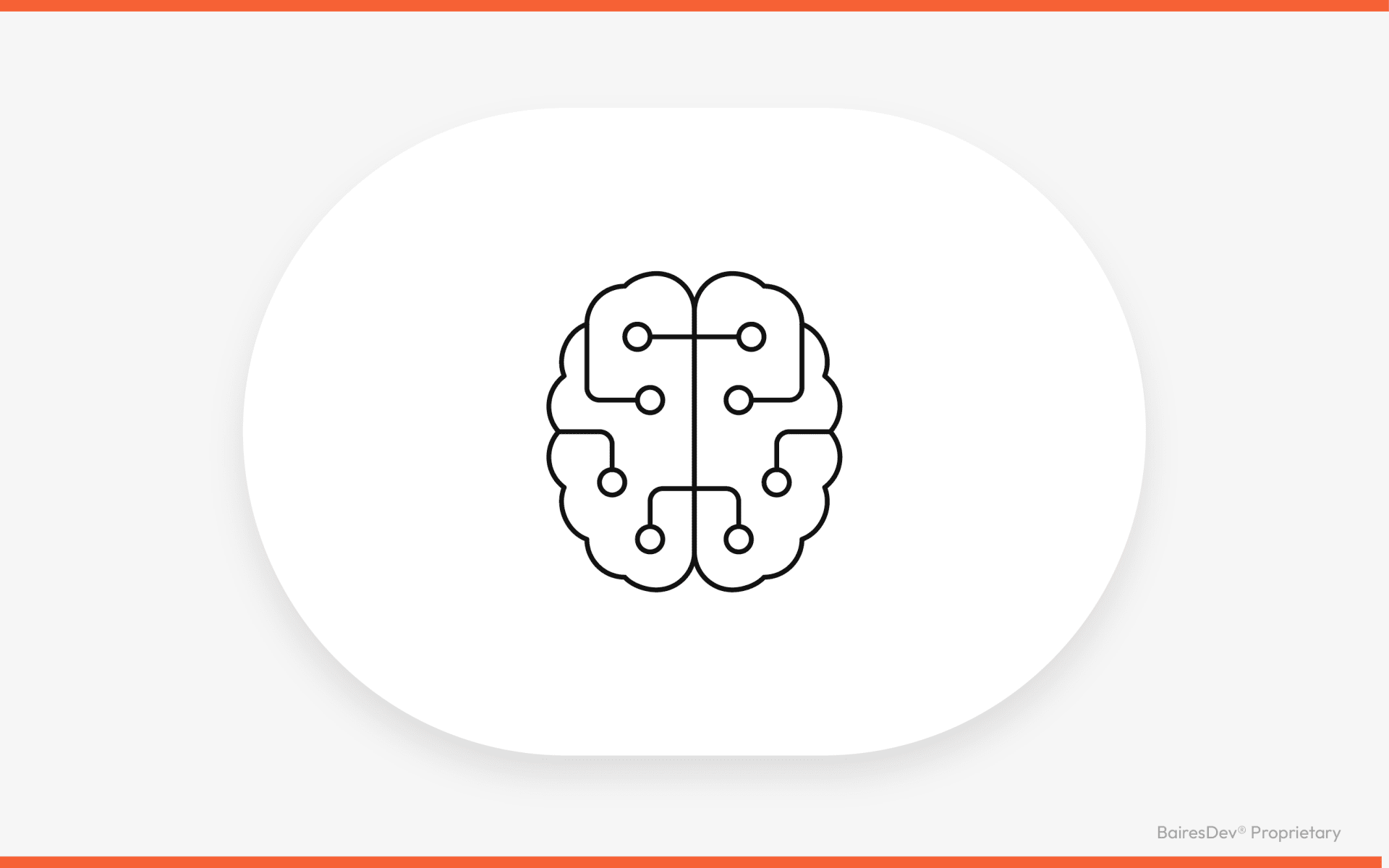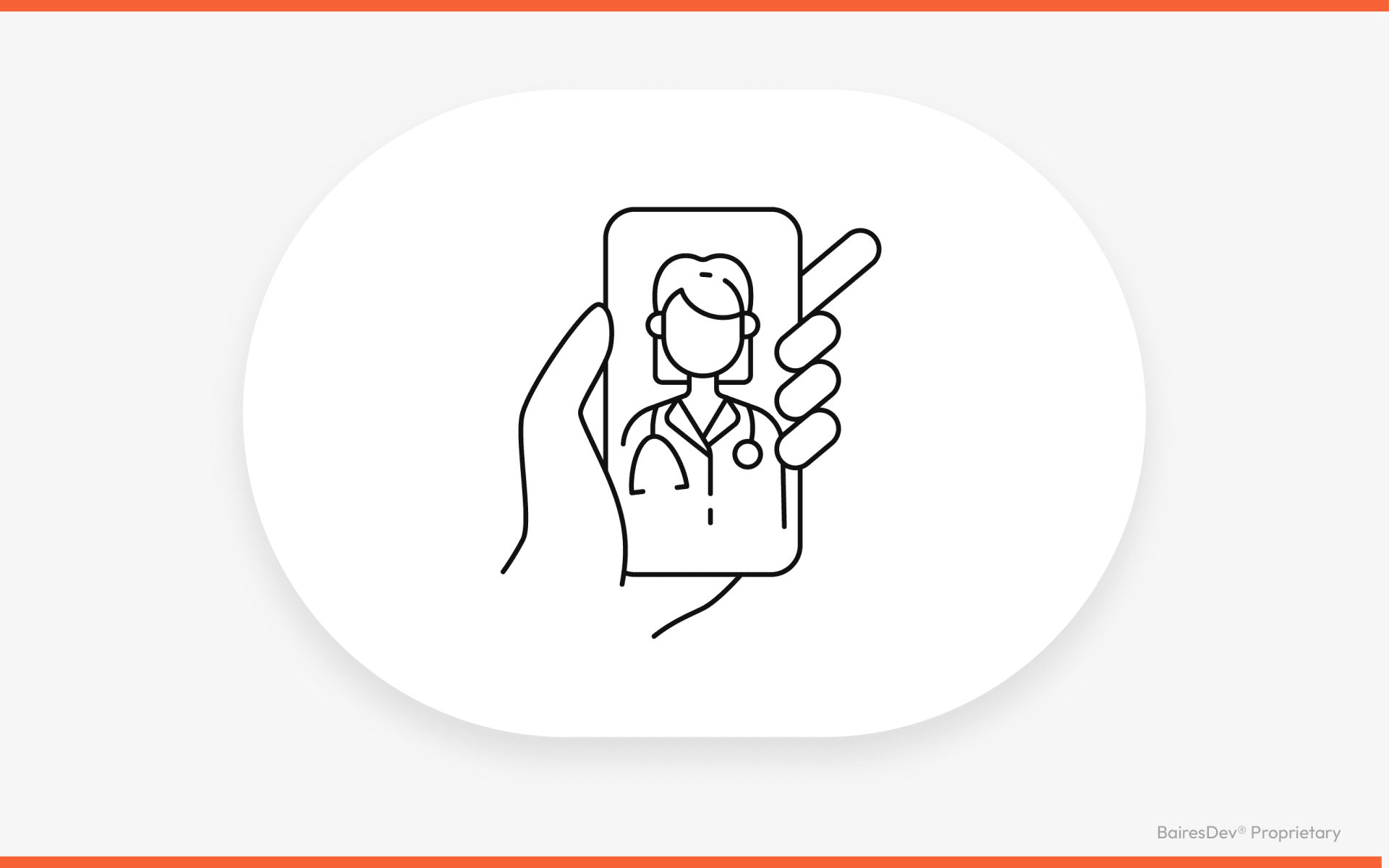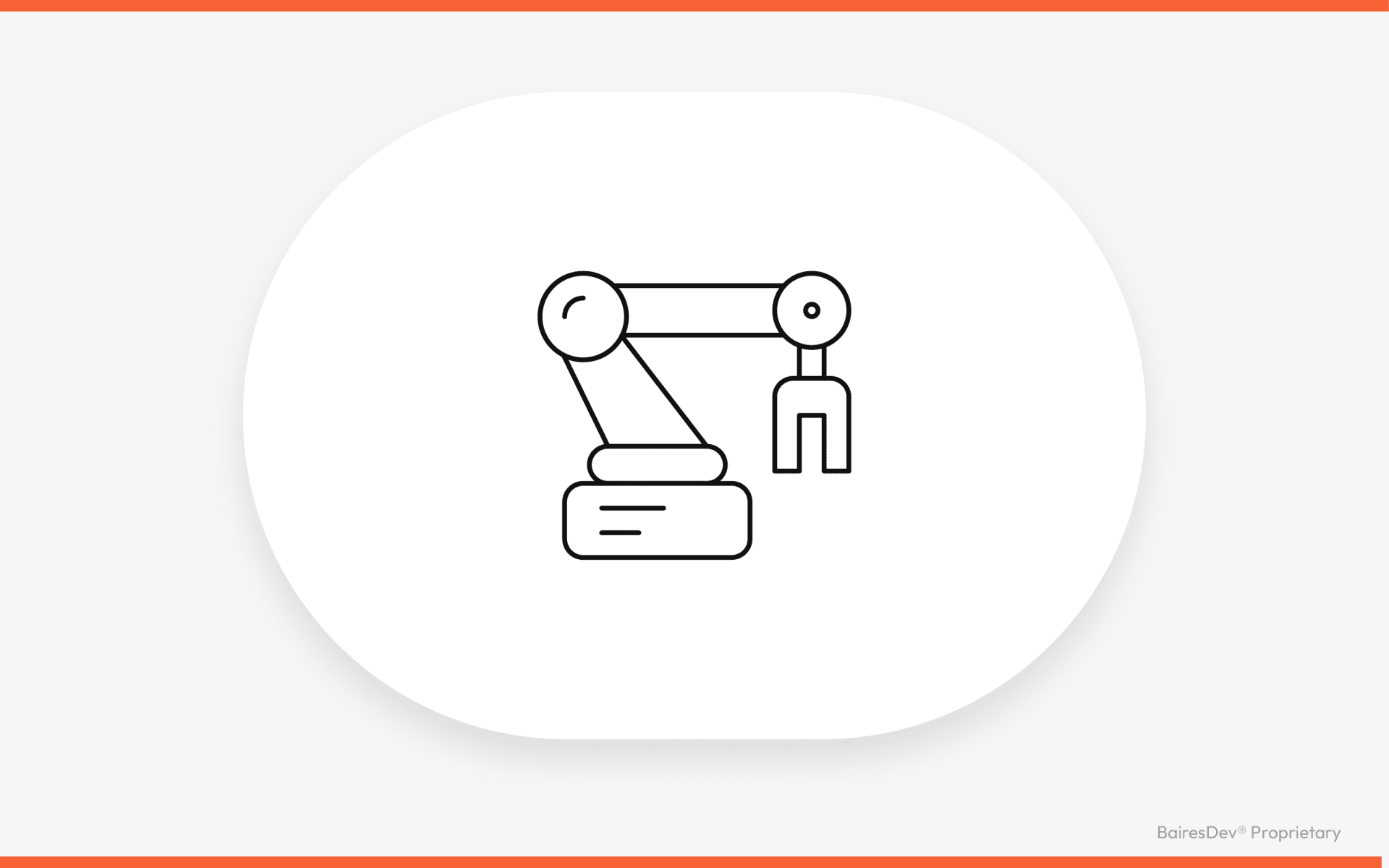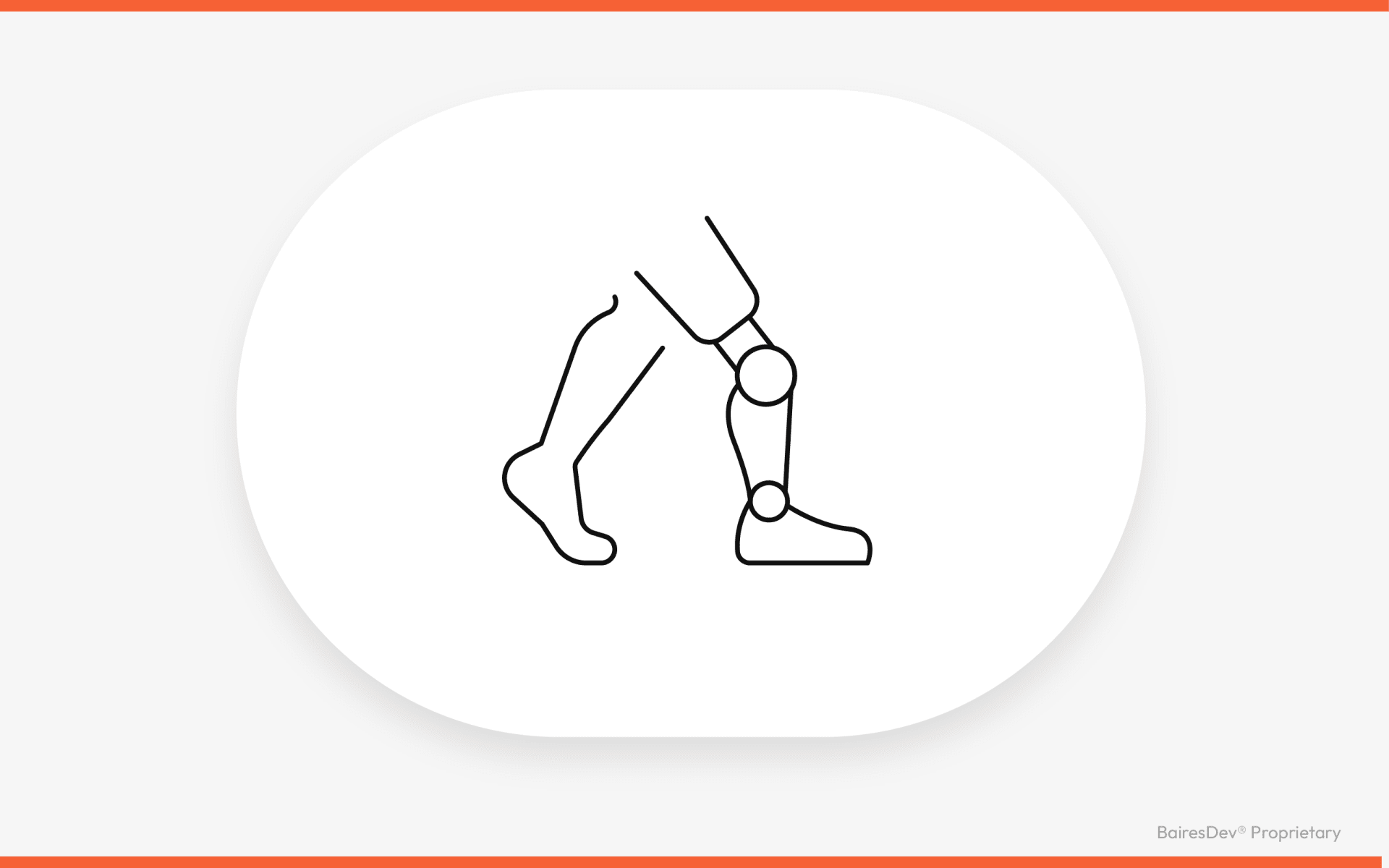What if a smartwatch could predict a heart condition or AI could design your next cancer treatment? These aren’t distant possibilities. They’re the result of very real innovations in healthcare technology.
From AI-powered disease detection to treatments tailored precisely to your DNA, technology trends are transforming the healthcare industry on all fronts. It’s helping providers tackle challenges like workforce shortages and rising costs and provide more proactive and personalized care.
Let’s look at how these technology trends are laying the foundation for a smarter, more connected healthcare system in 2025 and the years to come.
Artificial intelligence and machine learning in healthcare

Thanks to artificial intelligence and machine learning advancements, healthcare providers are discovering new ways to improve care, personalize treatments, and streamline operations.
AI-driven diagnostics
The days of waiting weeks for test results are over. With AI-powered imaging tools, a healthcare provider can automate imaging analysis and flag early signs of diseases—sometimes even catching issues before outward symptoms show.
- Medical Imaging: AI tools assist radiologists in interpreting CT scans, MRIs, and X-rays more efficiently. For example, Mount Sinai Health System uses AI as a “second opinion” tool for radiology to detect COVID-19 and other conditions with enhanced speed and accuracy
- Pathology: The FDA has approved some AI-powered tools to detect breast cancer. AI algorithms are integrated into pathology workflows to identify cancerous cells and other abnormalities. These systems analyze biopsy samples faster than human pathologists for timely diagnosis and treatment.
- Stroke Detection: AI platforms such as Hevi AI use deep learning to detect ischemia and hemorrhage in brain scans in minutes. This helps reduce diagnostic delays and lets doctors act quickly to prevent long-term disability.
Personalized treatment through machine learning
Imagine if your treatment plan was designed not just for someone like you but specifically for you. That’s the promise of AI-driven medicine. Machine-learning models help doctors develop care plans unique to their patients by analyzing vast amounts of patient data.
- Oncology: AI systems can recommend personalized cancer treatments by analyzing tumor types and genetic information. For instance, Pfizer collaborates with IBM Watson to tailor immunotherapy treatments to enhance cancer care.
- Cardiology: Wearable devices integrated with AI continuously monitor heart conditions, sending alerts to both patients and doctors if they detect early signs of heart disease. This allows for timely interventions that can prevent heart attacks or strokes.
- Genomics: Hospitals like the Hospital for Sick Children in Toronto use the AI-powered MendelScan tool to identify rare genetic disorders by scanning patients’ genetic data for mutations. These insights speed up diagnosis and ensure patients receive appropriate treatment quickly.
AI in hospital operations
AI is helping hospitals and other healthcare facilities achieve a new era of efficiency by predicting patient demand, optimizing supply chains, and managing patient flow.
- Predictive Staffing: Hospitals are using ML algorithms to forecast patient demand and adjust staffing accordingly. The Mayo Clinic’s AI-powered spinal surgical scheduling system reduced doctors’ overtime by 10%.
- Supply Chain Management: AI tools also help hospitals predict supply needs, preventing shortages of critical drugs and equipment. This improves patient care while minimizing waste and lowering costs.
- Patient Flow Optimization: AI-based systems can predict patient admissions and discharge patterns, allowing hospitals to allocate beds and resources efficiently. Some providers have reported nearly a 20% increase in surgical space utilization thanks to improvements in predicting patient flow.
Telemedicine and remote patient monitoring

Telemedicine has come of age during the COVID-19 pandemic and shows no signs of slowing down. It’s about convenient access to care and reaching underserved populations.
Telemedicine platforms growth
According to some estimates, the global telehealth market is projected to grow 24.3% annually from 2024 to 2030. Leading platforms like Teladoc, Amwell and MDLIVE are expanding their reach as telehealth adoption increases globally. This is especially true in the US, India and UK where value-based care models and expanded reimbursement policies have prompted investments in digital health infrastructure.
Telemedicine goes beyond video consultations. It’s primary care, specialist appointments, mental health therapy and virtual rehabilitation programs. As virtual care demand grows these platforms are integrating remote patient monitoring (RPM) tools and AI-driven virtual assistants making healthcare more proactive and patient-centered.
Remote patient monitoring advancements
While telemedicine provides real-time interaction, remote patient monitoring (RPM) supports care outside traditional clinical settings.
- Wearable Devices: Wearables like Accuhealth and Philips offer early alerts for heart failure, hypertension or diabetic complications, supporting timely interventions.
- RPM Cardiac Implants: Hospitals can now use cardiac implants with RPM to detect minute changes in heart function, potentially preventing heart failure before symptoms escalate.
- Hospital-at-Home Model: HaH programs rely on RPM tools, wearable devices, and telemedicine platforms to track vital signs and provide real-time feedback to healthcare providers. With this model, patients with chronic conditions or post-surgery can receive hospital-level care in their homes while being monitored remotely.
Thanks to continuous monitoring, RPM has proven effective in decreasing readmissions by up to 50% in some case studies.
Wearable health technology and the rise of personalized care
Wearable health technology is changing the way we care for ourselves. From smartwatches to glucose monitors, these devices are helping patients and providers stay one step ahead by continuously tracking key health metrics.
Individuals get continuous insights into their health, helping them manage chronic conditions and hit health goals. Healthcare providers get the real-time insights needed to treat, monitor, and personalize care.
Types of wearable health devices
- Smartwatches: Devices like the Apple Watch and Fitbit track heart rate, ECG, activity levels, sleep patterns, and even oxygen saturation. These devices are widely used medical monitoring in cardiac rehabilitation
- Continuous Glucose Monitors (CGMs): For people with diabetes, CGMs let users track glucose levels in real time. These devices reduce the need for fingerstick tests and alerts to prevent dangerous blood sugar fluctuations.
- Smart Rings: Wearables like the Oura Ring track heart rate variability (HRV), sleep, and stress levels. Because they provide insights into the wearer’s physiological state, they are increasingly used in healthcare settings for overcoming mental health challenges and monitoring chronic conditions.
- Smart Clothing and Wearable Sensors: Sensors embedded in shirts, socks, and other garments can monitor respiratory rates, muscle activity, and heart function. These devices are especially useful for physical therapy and post-surgical recovery.
- Wearable ECG and Blood Pressure Monitors: Wearable ECG monitors are integrated into smartwatches to detect heart rhythm irregularities such as atrial fibrillation. Similarly, wearable blood pressure monitors provide continuous readings to proactively manage hypertension.
- Wearable Sleep Trackers: Devices like Fitbit and Whoop monitor sleep cycles, oxygen levels, and heart rate during rest. They help identify conditions like sleep apnea and promote better sleep hygiene.
- Smart Glasses and Augmented Reality (AR) Wearables: Though still in early development, AR-enabled glasses are starting to appear in healthcare. They offer applications for telemedicine, surgical assistance, and mental health therapy by providing interactive, visual information in real time.
How wearables improve patient comes
With wearable devices continuously tracking key health metrics, these innovations are promoting better health outcomes across the board, from chronic disease management to preventive care.
- Diabetes Management: Continuous glucose monitors (CGMs) provide patients with real-time data on blood glucose levels and send alerts when levels are too high or low, avoiding complications and hospitalizations.
- Heart Disease Management: Smartwatches with ECG capabilities monitor heart rhythms to detect early signs of atrial fibrillation (AFib) or other irregular heart rhythm, which helps reduce the risk of stroke and heart failure.
- Post-Surgery Recovery: Smart clothing embedded with biometric sensors tracks mobility, heart rate, and breathing so healthcare providers can monitor recovery progress remotely. This reduces the need for in-person follow-ups, minimizes readmissions, and ensures patients stick to rehabilitation routines.
- Cardiac Rehabilitation: By incorporating wearable technology, cardiac programs can provide continuous feedback on heart function and physical activity and promote faster recovery.
- Sleep Tracking: Wearables that monitor sleep patterns help detect sleep apnea and other disorders early. By improving sleep quality, these devices contribute to better overall health and reduce the risk of chronic conditions like hypertension and diabetes.
Blockchain in healthcare
With increasing cybersecurity risks, blockchain is the way to secure patient data and enable provider data-sharing. It lets providers maintain privacy and continuity of care without compromising critical information.
How blockchain secures patient data
Blockchain keeps data private and secure by storing health records in a digital ledger. Every transaction is encrypted and linked to the one before, making it almost impossible to change or delete records without detection. That’s why blockchain is good for electronic health records (EHRs).
Since blockchain is decentralized, there’s no single point of failure, which means lower risk of large-scale cyberattacks. It also does identity management, so only authorized people can access patient data. That gives patients more control over who sees their health records and prevents unauthorized access.
Blockchain and healthcare interoperability
Many healthcare systems struggle with incompatible EHRs and fragmented data which causes inefficiencies and delays in care. Blockchain solves this by creating a shared, unchangeable record that can be accessed by authorized providers.
This is used across the healthcare industry to secure and transparent everything from medical records to preventing counterfeit drugs.
- Securing Electronic Health Records (EHRs): Blockchain creates tamper-proof medical records only accessible to authorized providers. Estonia is a good example of a country using blockchain to secure patient data and prevent unauthorized access.
- Health Insurance Claims Management: Smart contracts on blockchain automates claims process, improves accuracy, reduces fraud and speeds up payments by eliminating third-party verification steps
- Drug Supply Chain Management: Pharmaceutical companies use blockchain to track drugs from manufacturing to delivery which reduces the risk of counterfeits and makes regulatory compliance easier.
- Clinical Trials and Research Data Sharing: Blockchain protects clinical trial data from tampering so collaboration between researchers, institutions and regulators is secure.
- Patient Identity Management: Blockchain-based identity platforms like MediLinker gives patients control over their health records and restricts access to only authorized providers.
- Public Health Data Management: Public health organizations use blockchain to track vaccination records and other public health data.
In short, blockchain is solving the problems that have plagued healthcare systems for a long time. Providers who adopt it will have simpler operations, better data privacy and stronger patient relationships—all while building a more efficient, collaborative healthcare system.
Robotics and automation in healthcare

Robots in operating rooms? This is not a scene from a sci-fi novel but a real-world solution to modern healthcare challenges. Robotic systems now assist with minimally invasive surgeries and automate hospital workflows.
Robotic-assisted surgery
Over 10 million procedures performed globally, the da Vinci Surgical System is one of the most used robotic platforms in hospitals today. This system allows surgeons to operate with greater precision using small incisions—resulting in shorter recovery times and fewer patient complications.
But does it really make surgical care safer and more effective? In some cases, yes. Studies show patients undergoing surgery with the da Vinci system often have easier procedures and shorter hospital stays than those undergoing traditional open surgeries.
Because of its effectiveness, this system is becoming a valuable tool in gynecology, urology and cardiology, among other specialties.
Automation in hospital workflows
In hallways, operating rooms and even supply closets, automation and robotics are working behind the scenes.
- Robotic-Assisted Surgery: Da Vinci Surgical System is used for minimally invasive surgeries in specialties like cardiology, gynecology and urology to improve precision and reduce patient recovery time. Another example is the MAKO Robotic System which creates 3D models to guide surgeons during knee and hip replacements.
- Automated Medication Dispensing: Automated dispensing units like Omnicell and Pyxis Systems reduce dosing errors by securely storing and tracking medications so the right dose reaches the right patient.
- Hospital Logistics and Supply Transport: Aethon’s TUG Robots autonomously deliver supplies, medications and food throughout hospitals. Their work reduces staff workload and ensures timely deliveries.
- Patient Support and Care Tasks: Moxi Robot developed by Diligent Robotics assists nurses by performing non-clinical tasks like delivering supplies and transporting lab samples.
- Robotic-Powered Administrative Tasks: Hospitals use robotic process automation (RPA) software to automate repetitive tasks like appointment scheduling, billing and claims processing to improve efficiency and reduce errors.
- Rehabilitation and Physical Therapy: ReWalk Exoskeletons assist patients with mobility challenges, particularly those recovering from spinal cord injuries or strokes. So they can regain movement with robotic assistance.
- Disinfection Robots: Robots like those developed by Xenex use ultraviolet light to disinfect hospital rooms and equipment, helping reduce the spread of infectionsAs healthcare systems face more pressure than ever, robotics and automation will play a growing role in addressing workforce shortages, improving surgical outcomes and optimizing hospital performance.
They’ll also free up healthcare providers to focus on what matters most: the human side of care.
Virtual reality (VR) and augmented reality (AR) in healthcare
What if medical students could practice complex procedures in virtual reality, or PTSD patients could confront their trauma in a safe, controlled virtual world? Virtual reality and augmented reality are making these possibilities a reality, creating immersive and interactive experiences for patients and healthcare professionals.
Medical training with VR and ARVR lets medical students and professionals practice procedures and respond to emergencies in a safe, controlled environment. For example, hospitals like Johns Hopkins and Massachusetts General use VR platforms like PrecisionOS to train surgeons in orthopedic procedures. Students can hone their skills without real patients or cadavers.
AR takes it further by overlaying 3D anatomical models onto the real world. This helps surgeons and students visualize complex anatomical structures, making it easier to understand spatial relationships. AR is particularly useful for surgical procedures and diagnostics that require real-time patient anatomy awareness.
VR for patient therapy and rehabilitation
VR-based therapies are becoming more popular in physical therapy, mental health treatment and pain management. Tools like Corpus VR turn rehab exercises into fun, interactive games for patients recovering from strokes or injuries.
In mental health care, VR is used for exposure therapy to treat phobias and post-traumatic stress disorder (PTSD). Programs like USC’s Bravemind put patients in virtual environments that simulate triggering situations so they can work through trauma in a safe and supportive space. VR therapy also reduces anxiety during medical procedures like chemotherapy.
AR and VR for Surgical Planning
Surgeons use VR tools to convert 2D medical images from MRIs and CT scans into 3D models they can explore and manipulate before surgery. For example, Surgical Theater’s VR solutions let surgeons walk through a virtual model of a patient’s brain or heart before entering the operating room. With these tools they can prepare for complex procedures more effectively and reduce complications.
Genomics and precision medicine
Imagine a world where treatments are tailored precisely to your DNA—that’s the power of genomics and precision medicine. These breakthroughs are helping providers predict disease risk, optimize therapies, and design targeted treatments, especially for complex diseases like cancer and rare genetic disorders.
Advances in genetic testing and personalized medicine
Leading companies like 23andMe and Illumina are making big strides in genetic testing. 23andMe, originally known for its at-home DNA tests, has expanded into developing new treatments using data from its large genetic database. The goal is to create personalized therapies based on how an individual’s immune system responds to diseases.
Similarly, Illumina is improving next-generation sequencing (NGS), which helps identify the genetic changes that cause diseases. This technology gives healthcare providers the tools to diagnose conditions more accurately and choose treatments that work better for each patient. With these advancements, doctors can design custom health plans based on each person’s unique genetic markers and health risks.
Precision medicine in cancer treatment
Precision medicine is revolutionizing cancer care by tailoring therapies to a patient’s genetic makeup. One example is comprehensive genomic profiling (CGP), which analyzes hundreds of genes from a single biopsy to find the best treatment options.
Studies show that CGP improves survival rates by matching patients with therapies targeting specific tumor mutations. For instance, a study by Providence Health found that patients who received CGP-guided treatments had better patient outcomes than those treated with standard chemotherapy.
Precision oncology also uses biomarkers to predict how well patients will respond to certain therapies, such as checkpoint inhibitors used in immunotherapy. These insights help oncologists create more effective personalized treatment plans that reduce the risk of unnecessary side effects, giving patients the best chance for successful outcomes.
3D printing in healthcare

Thanks to 3D printing, patients can receive prosthetic limbs and implants that fit their body with millimeter precision. These custom-made devices improve comfort and functionality and speed up recovery by providing a perfect anatomical fit.
3D-printed medical devices
During the COVID-19 pandemic, hospitals quickly adopted 3D printing to produce critical supplies, such as ventilator components and personal protective equipment, when traditional supply chains couldn’t keep up.
Today, hospitals and manufacturers are increasingly embracing this technology to create custom implants and prosthetics. Examples include orthopedic implants, dental restorations, and cranial plates, all tailored to the individual. Hearing aids, for example, are now almost entirely 3D-printed, which has reduced time from a week to just one day.
To date, the FDA has approved hundreds of 3D-printed medical devices, signaling confidence in their safety and effectiveness.
Bioprinting and future possibilities
Bioprinting pushes 3D printing to new heights by using bio-inks made from living cells to create tissues and organs. Researchers are already working on printing tissues like skin, cartilage, and bone to help with wound healing and transplants. Although fully functional organs suitable for transplant aren’t a possibility yet, early achievements—such as small models of kidneys and livers—offer hope for future breakthroughs.
The ultimate goal of bioprinting is to create customized working organs for each patient, eliminating the need for donor organs and lowering the risk of rejection. However, scientists still face challenges, such as developing vascular networks within printed tissues to keep them functioning over time.
Healthcare data interoperability and health information exchange (HIE)
Interoperability in healthcare refers to the seamless exchange of patient information between different healthcare providers and systems. It ensures that doctors, hospitals, and other care providers have timely access to critical patient data, which leads to more coordinated and effective care.
Current challenges in healthcare data sharing
Many healthcare systems struggle with fragmented and incompatible data platforms. Patient information gets trapped in separate systems without interoperability, forcing providers to rely on outdated methods like faxing or manual record transfer. This causes delays, increases administrative burdens, and can lead to medical errors or missed care opportunities.
The lack of interoperability also makes coordinating care more difficult. Patients receiving treatment from multiple providers may face redundant tests or inconsistent care because providers can’t access complete, up-to-date health records.
Solutions for improving data interoperability
One promising solution for improving data sharing in healthcare is Fast Healthcare Interoperability Resources (FHIR), a standard created by HL7. FHIR makes it easier for healthcare systems to exchange data through web-based APIs, which helps reduce paperwork and improves care coordination. For example, UPMC uses FHIR to connect data between outpatient clinics and hospitals so doctors can share patient information quickly and make informed decisions in real time.
Another important effort is the Trusted Exchange Framework and Common Agreement (TEFCA), which aims to create a national infrastructure for securely sharing health information between providers and government agencies. Programs like TEFCA are essential for building a more connected healthcare system that gives providers the data they need during every patient’s care journey.
The role of cybersecurity in healthcare technology
Every patient interaction leaves a digital footprint—from EHRs to prescription orders—and securing that information is more crucial than ever. Without robust cybersecurity, healthcare providers risk system outages, data theft, and compromised patient safety.
Cybersecurity threats facing healthcare systems
Healthcare organizations are frequent targets of ransomware attacks, phishing attempts, and data breaches. Nearly 386 incidents were reported in the first half of 2024 alone. One significant breach happened at Change Healthcare. This attack shut down claims processing and reportedly forced UnitedHealth to pay a $22 million ransom.
These attacks do more than just cause financial damage. They threaten patient safety by delaying care, locking providers out of critical systems, and disrupting life-saving equipment.
Some ransomware groups specifically target hospitals because they know they rely on constant, uninterrupted service. As a result, healthcare organizations are often forced to either pay the ransom or face operational paralysis, putting both patients and providers at risk.
Cybersecurity best practices in healthcare
To protect their data and infrastructure from cyberattacks, healthcare organizations are using several key strategies:
- Encryption of Patient Data: Encryption ensures that even if hackers access patient information, it remains unreadable without decryption keys.
- Regular System Audits and Vulnerability Assessments: Healthcare providers routinely check their systems for weaknesses and address issues before attackers can exploit them. These audits also ensure that systems stay up-to-date and compliant with the latest security standards.
- Zero-Trust Security Models: Many healthcare systems now use zero-trust frameworks, meaning no user or system is trusted by default. Access to sensitive data is only allowed after strict authentication and monitoring, ensuring only authorized personnel can enter critical systems.
The U.S. government has introduced new cybersecurity guidelines and performance goals to help healthcare providers strengthen their defenses. In addition, the Trusted Exchange Framework and Common Agreement (TEFCA) promotes secure data sharing to protect patient information during interoperability efforts so that critical health data stays safe throughout the system.
What’s next? A look at healthcare technology in 2025 and beyond
What does the future hold for healthcare technology? Though no one knows with certainty, we believe even more revolutionary changes are coming—driven by innovations in quantum computing, AI-powered drug discovery, and nanotechnology.
- Quantum Computing: If fully developed, quantum computing could revolutionize drug discovery by simulating complex molecules faster than today’s computers. This may allow researchers to find effective treatments sooner and improve early disease detection. However promising, this technology is still experimental and not ready for practical healthcare applications.
- AI-Driven Drug Discovery: AI tools could reshape drug development by analyzing large datasets and designing personalized treatments based on patient-specific information. While these advancements may improve treatment precision and boost success rates, realizing their full potential will require further development and validation.
- Nanotechnology in Healthcare: In the future, nanotechnology could enable targeted drug delivery, reducing side effects by focusing treatment on diseased cells. It also holds promise for improving chronic disease management and advancing personalized cancer therapies, though significant research is still needed before it can be widely applied in personalized therapies.
As these technologies evolve, healthcare organizations will be even better equipped to handle future challenges, such as managing population health and controlling rising healthcare costs, while offering care that is more personalized, accessible, and predictive.
FAQs
What is the role of AI in healthcare technology trends?
With AI-powered tools, a healthcare provider can analyze large data sets to detect diseases earlier, personalize treatments, and more accurately predict patient outcomes.
In diagnostics, AI supports tasks like medical imaging, helping radiologists detect conditions like cancer more accurately. It also speeds up drug discovery by identifying promising compounds faster than traditional methods.
Beyond clinical applications, AI helps streamline hospital operations through predictive staffing, automated scheduling, and supply chain management. As AI technology advances, it will play an even larger role in remote patient monitoring, virtual health assistants, and precision medicine.
How is telemedicine changing healthcare?
Telemedicine makes it easier for patients to access care remotely, reducing the need for in-person visits. It improves access to primary care, mental health services, and specialists, especially for people in rural areas or those with mobility issues. Telemedicine also supports chronic care management through wearable devices that transmit real-time health data to providers.
Telemedicine helps providers cut costs and improve care coordination by reducing emergency visits and hospital stays.
What are the benefits of blockchain in healthcare?
Blockchain helps healthcare organizations improve data security and transparency. With its tamper-proof records, providers can protect patient information from unauthorized access and allow secure data sharing across providers. This technology also gives patients more control over their data privacy.
How does precision medicine work?
Precision medicine customizes treatments based on a patient’s unique genetic makeup, environment, and lifestyle. Instead of using the same treatment for everyone, doctors use genetic testing to predict how an individual will respond to specific therapies.
This technology relies on biomarkers—measurable disease or health status indicators—to guide decisions about prevention, diagnosis, and treatment. This means two patients with the same condition may receive different treatments depending on their unique profiles.
How are wearables impacting patient care?
Wearable devices provide real-time health data that helps patients and providers monitor health more effectively. Devices allow patients to track heart rate, activity levels, sleep patterns, and glucose levels, encouraging them to take a more active role in managing their health.
Healthcare providers also use wearables for remote monitoring, especially for chronic conditions like diabetes, hypertension, and heart disease. By receiving continuous patient data, doctors can detect early warning signs, adjust treatments in real time, and reduce the need for in-office visits.






